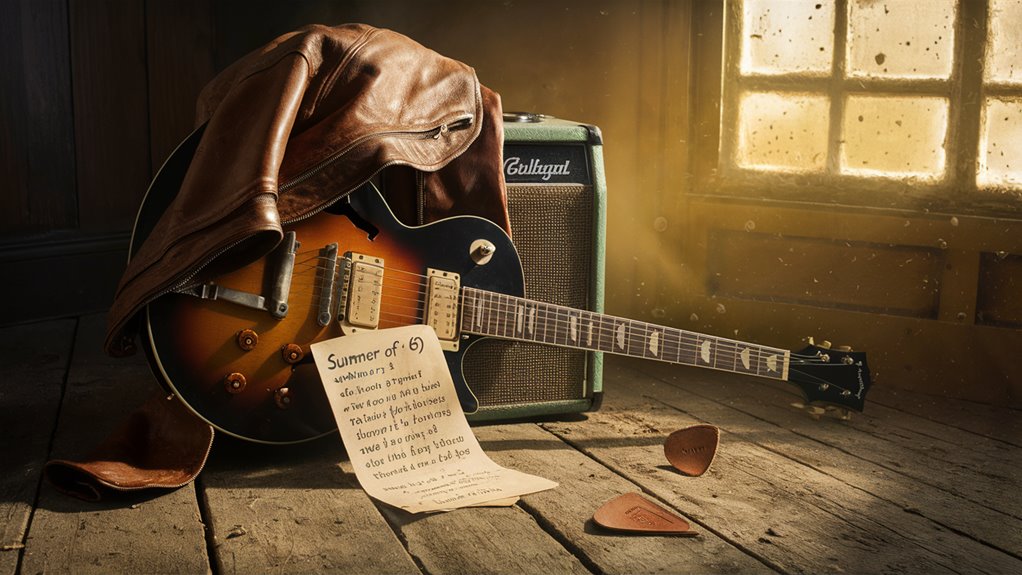Easy Rock Songs for New Players

Want to play famous rock songs but feel it might be too much? These old rock hits are simple yet fun for new guitar players.
Great Easy Rock Songs
“Who Could It Be Now” starts easy with its simple chord setup in E minor. Its clear beat is great for learning the basics.
“Summer of ’69” is a lesson in power chords. The D-A mix makes a cool sound while it helps players get strong. 호치민퍼블릭가라오케
Next-Level Skills
“Every Rose Has Its Thorn” brings in key fingerpicking skills in G major. It moves players from simple strumming to more complex guitar work.
“Faithfully” by Journey pushes your skill with spread-out chord patterns. Its flowing style is great to work on finger movement and timing.
More Skills for New Players
“Love of a Lifetime” by FireHouse uses suspended chords and varying strum patterns. These tricks add depth but are still good for new players.
Each song builds on what you learned, moving from plain chords to trickier skills. Nail these tunes, and you’ll get good at basic rock guitar.
Who Could It Be Now
“Who Could It Be Now” – Song Details and Guitar Tips
Song Details
“Who Could It Be Now” was the first big song from Men at Work’s first album “Business as Usual” (1981). The song has a cool sax riff by Greg Ham, making it a popular 1980s tune.
How It’s Made
The song is built on a simple chord mix in E minor, using:
- Em (root)
- Am (fourth)
- B7 (fifth)
How to Play It
Verse Part
The verses use a steady strum pattern that focuses on the main beats.
Palm muting keeps the beat tight. This is key to getting the right sound.
Chorus Bits
The chorus has a more lively beat needing sharp, on-beat strums. Top Brands for Superior Sound
This part needs good timing to keep the beat while changing chords.
Summer of ’69
How to Play “Summer of ’69”
Key Power Chord Moves
Bryan Adams’ “Summer of ’69” is a well-known rock tune, using power chord changes and lively parts that are great for learning.
The song’s clear chord moves and beat patterns are good for mastering basic rock skills.
Getting Good at Verse and Chorus
The verse uses a D-A-Bm mix that helps build chord-changing skill.
This flow goes right into the chorus, where the D-A-G power chord mix asks for more focus on the rhythm and timing.
Every Rose Has Its Thorn
How to Play “Every Rose Has Its Thorn”

Start and Setup
Rock ballad skill starts with Poison’s famous 1988 song “Every Rose Has Its Thorn.” This guide goes over key moves from basic fingerpicking to solo parts.
Chorus Build
Dynamic changes mark the chorus parts. Use a medium guitar pick for more power but keep it controlled.
Key parts include:
- Building intensity
- Controlled strumming
- Smooth verse-to-chorus changes
Faithfully
Play “Faithfully” by Journey: Full Guide
Key Chord Moves and Skills
Journey’s famous ballad “Faithfully” needs specific skills and close focus for right guitar play. The song builds on a G major setup, with the piano part made for guitar.
Bridge Skills
The bridge asks for:
- Clean power chord moves
- Precise spread-out patterns
- Smooth change bits
- Even tone control
Love of a Lifetime
“Love of a Lifetime” – Full Guitar and Singing Guide
Song Info
“Love of a Lifetime”, out in 1991, became Firehouse’s main slow rock tune, showing off deep chord forms and top guitar work. Karaoke Menu: What to Serve for
This famous rock ballad shows a mix of skill and deep feel.
Singing Parts
The song’s singing setup needs:
- Controlled verse singing
- Building power through pre-chorus
- High energy in chorus parts
Sweet Child O’ Mine
Sweet Child O’ Mine: Full Guitar Guide and Details
The Famous Start
Sweet Child O’ Mine‘s well-known start was from Slash’s string-skipping work, turning into one of rock’s top guitar tunes. The drop pattern on the high E and B strings makes a tune that everyone knows and sets the song’s style. Karaoke Etiquette: How to Be a Respectful
Chorus Power and Feel
Moving to the chorus part, the setup changes to strong chord moves.
These power chords must sound big while keeping the ballad’s deep feel. Moving between verses and choruses shows the song’s range, asking for sharp focus on rhythm and timing.
Mastering the Solo
The guitar solo is a lesson in tune feel, showing right string bends and controlled vibrato.
Key parts include:
- planned hammer-ons and pull-offs
- well-spaced notes and phrases
- deep build-ups and slow-downs
- top bend moves
- right vibrato work
Knowing these while keeping strong control makes the solo’s own style.
Look at each bit on its own, focusing on getting it right before speed.
